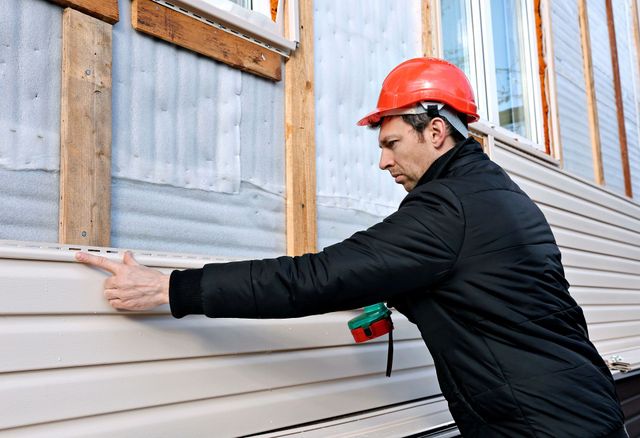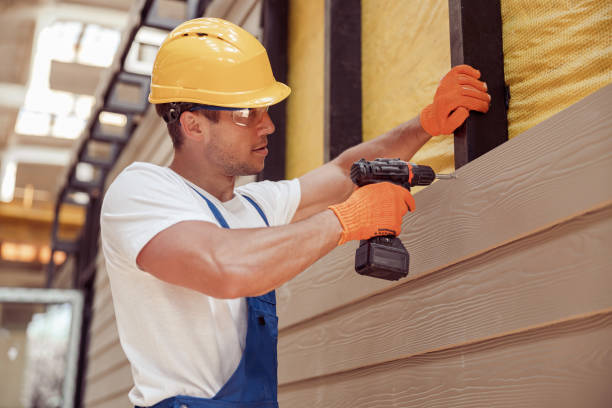The Crucial Overview to the Various Types of House Siding and Their Unique Advantages
In the realm of home renovation, picking the ideal home siding is a vital choice that impacts both aesthetic charm and useful performance. The variety of materials offered, such as timber, plastic, fiber cement, brick, and metal, each deal unique advantages that satisfy various demands and choices. Understanding these differences can significantly enhance the longevity and worth of a property - morris siding contractor. Nevertheless, with a lot of alternatives to take into consideration, which home siding product really attracts attention for your specific job? Discovering these choices can result in informed choices that align with both style and practicality.
Wood Exterior Siding
Timber siding, a popular choice for property exteriors, uses an ageless visual that integrates all-natural appeal with structural integrity. This house siding product is available in various designs, consisting of clapboard, roof shingles, and board-and-batten, enabling house owners to personalize their appearance to match their style preferences. Timber exterior siding is normally crafted from durable species such as cedar, redwood, or yearn, which are understood for their durability and ability to hold up against ecological stress factors.
Among the main benefits of timber house siding is its outstanding insulation properties, which can add to energy efficiency and lower heating prices. Furthermore, timber siding is biodegradable, making it an eco pleasant alternative when sourced sustainably. Routine maintenance, including paint or staining, can lengthen its life-span and enhance its appearance, allowing homeowners to protect the natural appeal of the wood.
Nevertheless, possible downsides include vulnerability to insects, rot, and weather condition damages, requiring sufficient treatment and maintenance - morris siding contractor. Despite these issues, when appropriately cared for, timber siding can offer a stunning and sturdy option that enhances the character of a home while supplying a cozy, inviting ambience

Plastic Exterior Siding
Plastic home siding has actually become a leading option for home owners seeking a low-maintenance outside choice that combines sturdiness and cost. This versatile material is crafted from polyvinyl chloride (PVC), making it resistant to different climate condition, including dampness and UV rays. Consequently, vinyl house siding does not warp, rot, or fade, guaranteeing durable visual charm.
One of the primary benefits of plastic house siding is its substantial variety of designs and colors, allowing property owners to accomplish the preferred seek their home without the requirement for regular repainting. In addition, vinyl exterior siding is very easy to mount, which can significantly minimize labor prices throughout construction or renovation jobs.
Plastic house siding additionally contributes to energy efficiency. Numerous options feature insulation backing, which enhances thermal efficiency, assisting to maintain comfy indoor temperatures and possibly lowering energy bills. Its smooth surface helps with very easy cleansing, calling for just periodic washing with a garden hose pipe to get rid of dirt and particles.
Fiber Concrete Siding
Fiber concrete exterior siding has gotten traction among homeowners and contractors alike because of its remarkable mix of longevity and visual convenience. Composed of a mix of cement, sand, and cellulose fibers, this house siding choice is engineered to withstand extreme climate conditions, including high winds, hefty rain, and temperature variations, making it a durable option for residential exteriors.

Among the primary benefits of fiber concrete exterior siding is its resistance to pests, such as termites, and its non-combustible nature, offering improved fire safety and security. morris siding contractor. Furthermore, it is readily available in a wide array of styles, colors, and textures, enabling property owners to accomplish their my explanation wanted aesthetic without compromising efficiency
Another advantage is its reduced upkeep needs; fiber cement house siding usually calls for paint or staining every 5-10 years, which is less regular than various other products. Additionally, its longevity adds to a lower general expense of possession, as it decreases the demand for frequent repairs or replacements.
Eventually, fiber cement siding represents an exceptional financial investment for those looking for a resistant, appealing, and functional outside alternative, incorporating both kind and feature to boost the home's visual charm.
Metal House Siding
The attraction of metal home siding hinges on its robust toughness and modern-day visual charm, making it a preferred choice for contemporary architecture. Readily available in products such as light weight aluminum and steel, steel home siding uses a variety of finishes and colors, enabling house owners to accomplish a customized look that enhances their style vision.

Power performance is an additional significant advantage, as many metal siding products are designed with insulation options that help regulate indoor temperatures. This can lead to reduced energy costs over time. Additionally, steel house siding is frequently recyclable, making it an environmentally friendly selection for sustainability-minded homeowners.
The installment procedure for steel exterior siding can be fairly straightforward, resulting in a quicker turn-around time for building jobs. In general, metal house siding incorporates performance and style, making it a practical option for those seeking a aesthetically enticing and enduring outside coating.
Block and Stone Exterior Siding
Block and rock exterior siding stands apart as a timeless selection that enhances the visual appeal of any type of home. Known for their durability and reduced maintenance, these products offer a phenomenal roi while raising the home's aesthetic charm. Readily available in various shades, structures, and patterns, block and rock can be tailored to match diverse building designs, from standard to modern.
One of the main benefits of brick and stone house siding is their energy effectiveness. Both products possess natural protecting homes that aid regulate indoor temperatures, possibly minimizing cooling and heating costs. Furthermore, they supply superior fire resistance contrasted to other home siding alternatives, contributing to enhanced security.
One more advantage is their long life. Block and stone can last for years, usually requiring minimal upkeep beyond occasional cleaning. Unlike wood exterior siding, they are unsusceptible parasites and rot, making certain a long-lasting exterior that withstands the elements.
Conclusion
In summary, the selection of siding dramatically affects a home's aesthetic allure, energy efficiency, and upkeep demands. Each type of home siding-- whether wood, plastic, fiber cement, steel, or brick and stone-- supplies special benefits tailored to numerous home owner preferences and ecological conditions.
One of the check key benefits of wood house siding is its exceptional insulation buildings, which can contribute to power efficiency and lower home heating costs. Furthermore, timber exterior siding is eco-friendly, making it an environmentally pleasant option when sourced sustainably.One of the main advantages of steel exterior siding is its resistance to numerous ecological elements.Power performance is one more substantial advantage, as numerous steel house siding products are developed with insulation choices that assist manage indoor temperature levels. Each kind of house siding-- whether wood, vinyl, fiber cement, metal, or block and rock-- offers distinct benefits tailored to different home owner preferences and ecological problems.